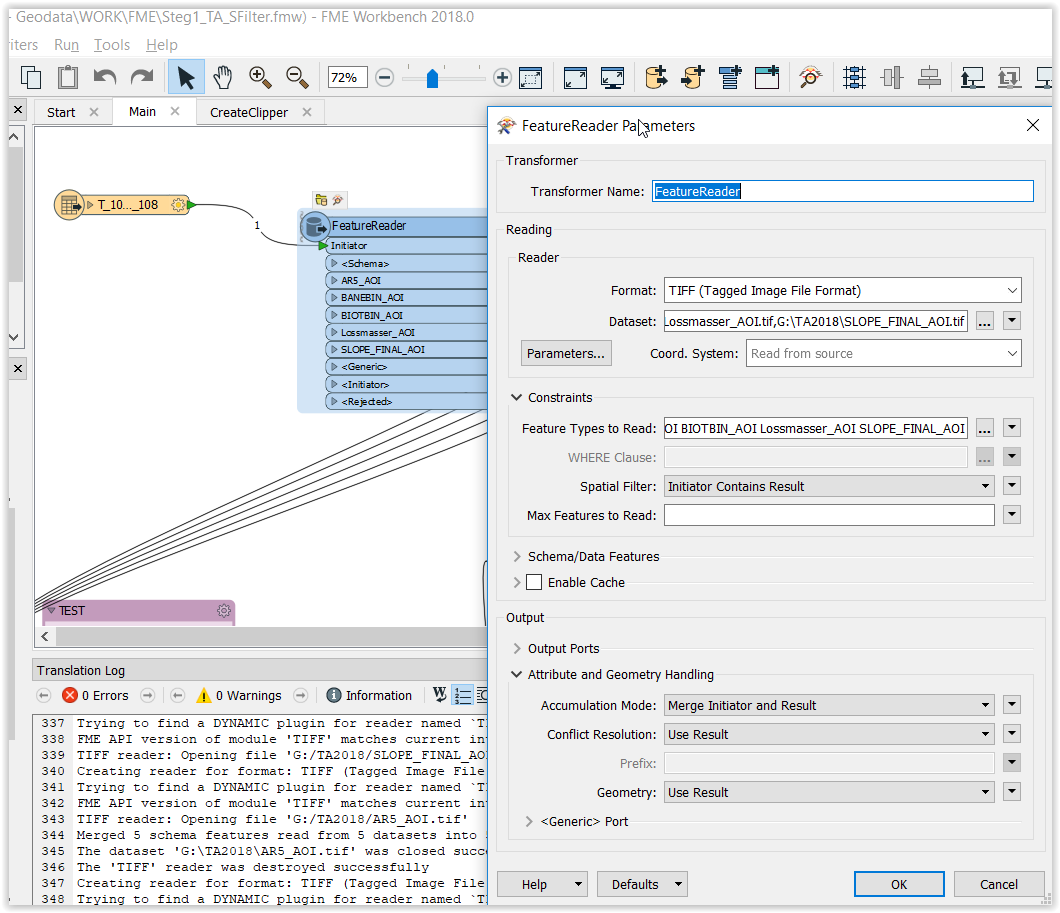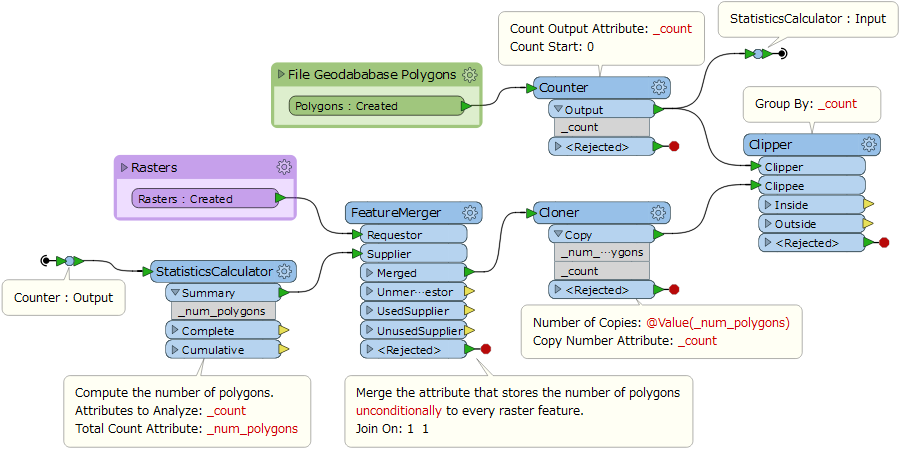I have a reader (file geodatabase) that contains about 900 polygons and want to use each feature independently as a clipper in a Clipper transformer, since I want to clip a few rasters based on that clipper. The result should be connected to that input somehow.
Best answer by takashi
View original








